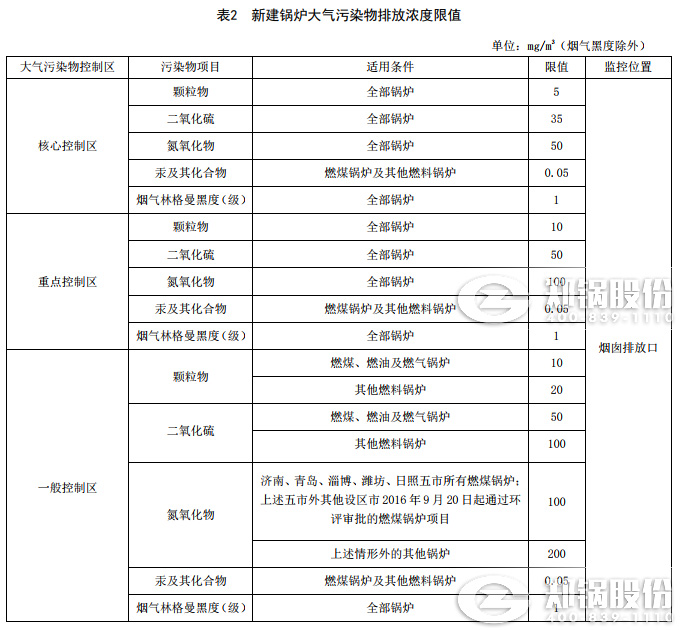1. Emission control area division
According to the three factors of ecological environment sensitivity, population density and environmental carrying capacity, the whole province is divided into three types of control zones, namely, core control zones, key control zones and general control zones. Among them, it is forbidden to build new industrial production facilities that pollute the atmospheric environment in the core control areas, and the built projects should be relocated gradually; the boiler projects outside the industrial production facilities should meet the requirements of relevant national and provincial laws, regulations and policies.
2. Pollutant emission control requirements
(1) Fuel-fired, gas-fired and other fuel-fired boilers that have been approved for commissioning or EIA by December 31, 2016,
(2) From the date of implementation of this standard to December 31, 2009, the emission concentration limits in Table 1 are implemented regardless of the control area.
Table 1 emission limits of atmospheric pollutants for existing fuel, gas and other fuel boilers

(3) All coal-fired boilers, oil-fired, gas-fired and other fuel-fired boiler construction projects and new boiler projects approved by EIA documents from January 1, 2017 to the day before the implementation of this Standard, shall, from the date of implementation of this Standard, follow the emission concentration limits in Table 2 of the control area in which they are located.
(4) With effect from January 1, 2020, existing oil, gas and other fuel boilers are subject to emission concentration limits in Table 2 of their respective control zones.
Table 2 emission limits of atmospheric pollutants for new boilers

(5) Where the competent environmental protection department under the State Council or the people's government at the provincial level clearly stipulates the geographical scope and time for the implementation of the special emission limits for air pollutants, boilers within such geographical scope shall, in addition to implementing the standards, meet the requirements of the special emission limits in the national standards as stipulated.
(6) Enterprises should take measures to strictly control the unorganized emission of atmospheric pollutants such as boiler fuel transportation, storage and ash storage.
(7) If two or more boilers emit flue gas by mixing mode, and the selected monitoring position can only monitor the concentration of atmospheric pollutants in the mixed flue gas, according to the most stringent emission concentration limits of each boiler.
(8) Each new coal-fired boiler room or other fuel-fired boiler room can only have one chimney. The height of the chimney shall be determined according to the total installed capacity of the boiler room and in accordance with Table 3. The chimney of the oil-fired and gas-fired boiler shall not be less than 8m. The specific height of the chimney shall be determined according to the approved environmental impact assessment documents. When a building is built within a radius of 200 m around the chimney of a new boiler house, the chimney shall be 3 m above the highest building.
Please feel free to contact me!
Please contact us for more information+86-18062456085
